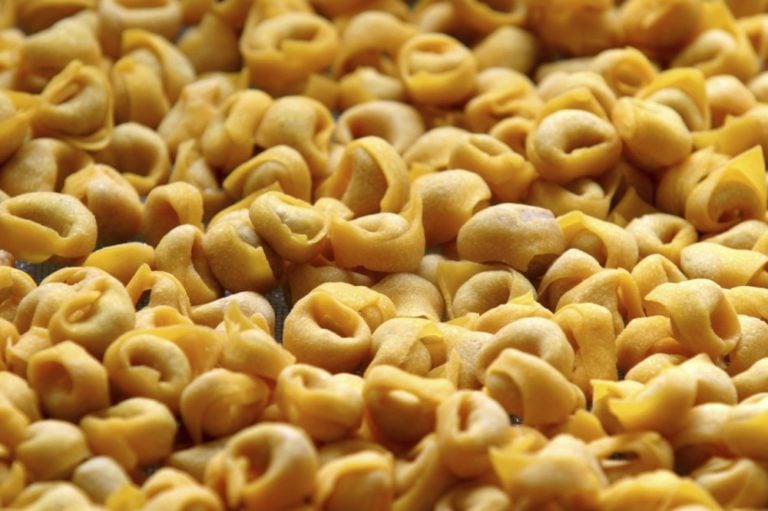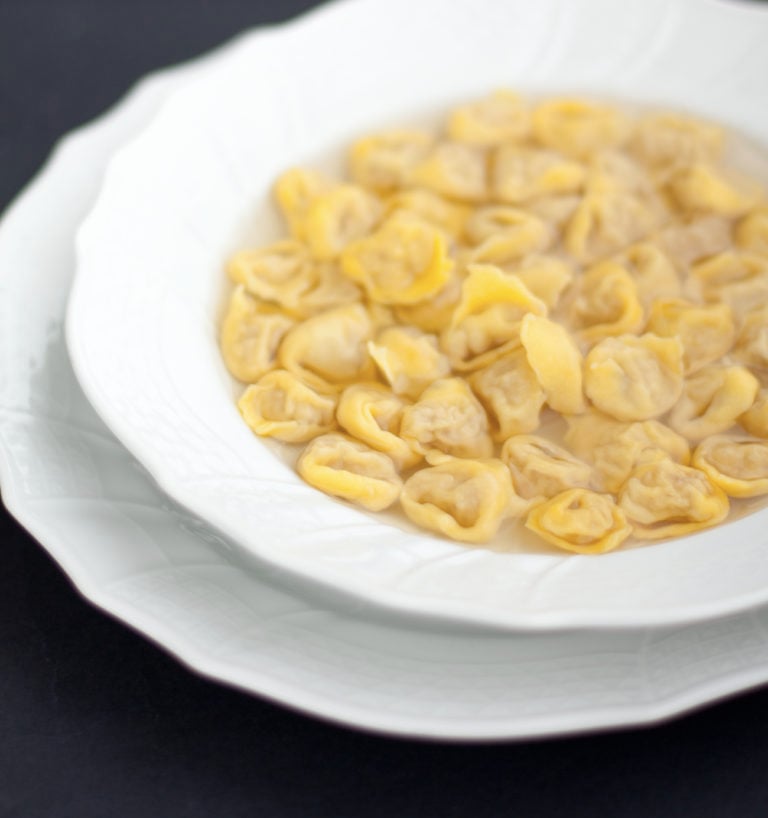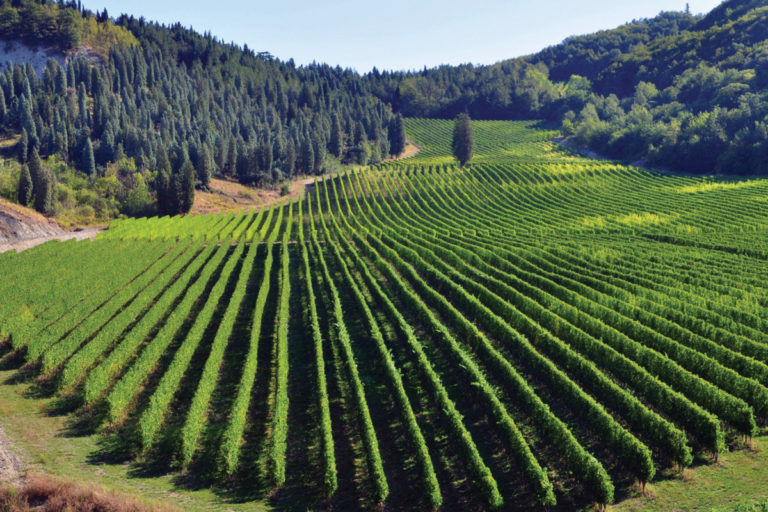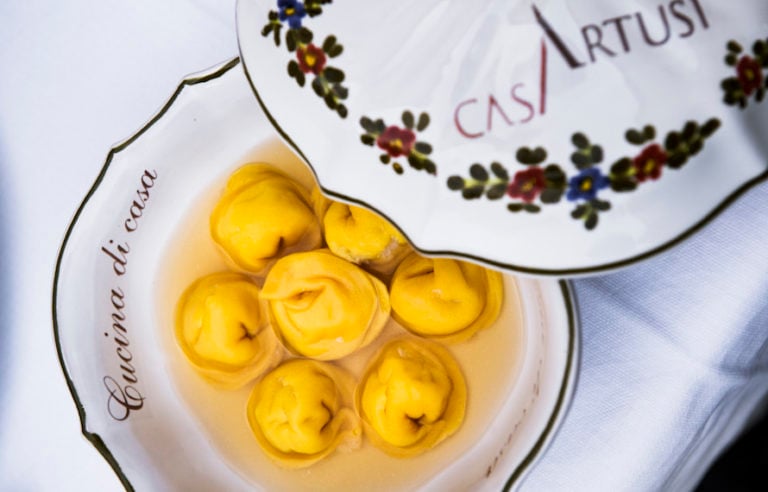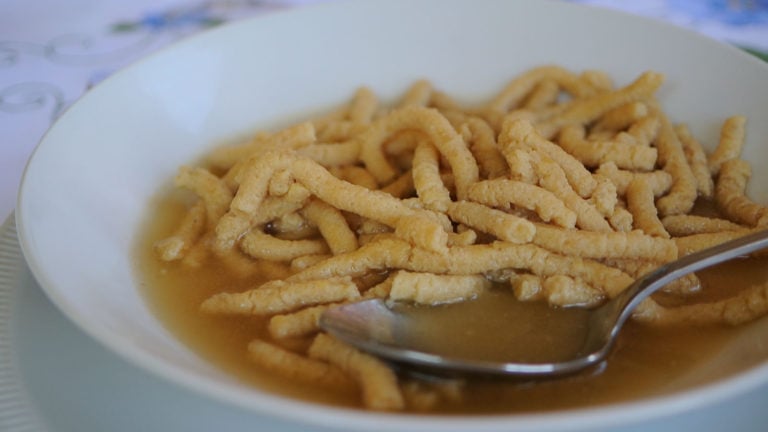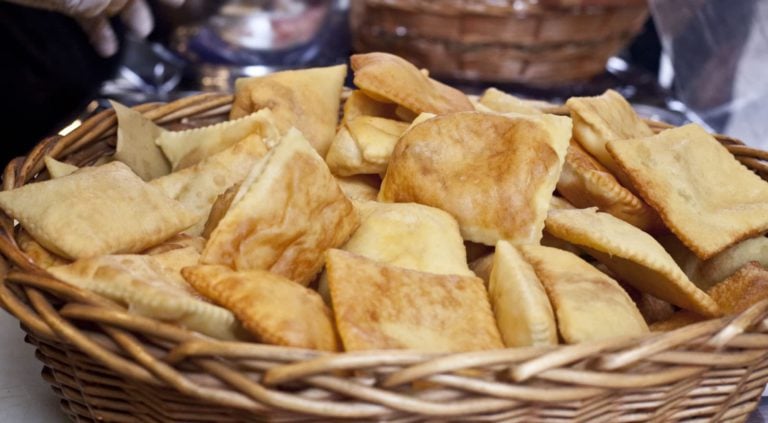If you ask in the area between Bologna and Modena what is the favorite dish for children from 0 to 99 years, you will probably receive a 100% concordant answer: tortellini in brodo! Not only for their unique flavor, but also for the taste of home and family they bring with them.
According to tradition, tortellini are a must when the whole family is gathered around the table at Christmas, and the preparation of the tortellini itself requires the collaboration of the whole kindred: one makes the dough sheet, one cuts it into small squares, one puts the stuffing on the squares and one closes the tortellino, making it turn around the little finger. A small family “assembly line”, a magical moment that gives a foretaste of the coming Christmas atmosphere, joins the spirits and smoothes out the little disagreements.
The history
But where and when was the tortellino born? And what is its story?
Actually the origins of the tortellino are not clear and its birth blend in with legend.
First of all the place: Bologna and Modena contended for centuries the “invention” of the tortellino, until the dispute was closed, quite recently, at the end of the XIX century, with an agreement between intelligent gourmets*: thanks to the wit of Giuseppe Ceri, it was agreed that the official birthplace of the tortellino was Castelfranco Emilia, a town that rises along the Via Emilia just halfway between Bologna and Modena. And this is where the traditional Tortellino Festival, organized by La San Nicola Association, takes place every year in the second week of September.
Also thanks to Giuseppe Ceri the legend about the origin of the tortellino was born: he – parodying the Secchia Rapita (the heroicomic poem written by Tassoni in 1614) – completed the story imagining that Mars, Bacchus and Venus arrived at a inn in Castelfranco and spent the night there. Mars and Bacchus got up early, while Venus remained in bed. Waking up alone, she called the innkeeper, who found the goddess completely naked. Struck by the beauty of the divine navel, he went down to the kitchen, took a fresh pastry and “created the art of making tortellini”.*
After Ceri, others embellished the legend of the tortellino, adapting it with more real people and habits, even identifying the inn where this would have happened.
For sure we know just that its origins date back to the Middle Ages: in a parchment dated 1112 we read that “Tertia pars turtellorum monachorum est” (the third part of the tortelli belongs to the monks), while from a papal bull of Pope Alexander III of 1169 we learn that a church had to assign “duas partes turtellorum”.
After these first two references, the “tortelli” are mentioned several times in documents from 1200 onwards, so that in the fourteenth and fifteenth centuries the “torteletti” – the direct forefathers of the tortellini – were quite widespread, at least among the richest part of the population, although their recipe was still far from the current one.
To find in the documents the specific term “tortellini” we arrive at 1708, when the menu of the Christmas lunch of the monks of San Michele in Bosco shows a “tortellini soup”.
Just to the XVIII century the addition of ox marrow to the ingredients of tortellino dates back. Before turning up your nose, you should know that this recipe by Alberto Alvisi, cook of the bishop of Imola, was so fortunate that to put the marrow in the tortellini stuffing was almost obligatory throughout the whole XIX century and in the first half of the XX century.
To find in the tortellini’s stuffing the mortadella, we must instead wait the XIX century.
The recipe of the filling that in 1891 Pellegrino Artusi proposes in his manual “Science in the kitchen and the art of eating well” is composed of 30 grams of raw ham, 20 grams of mortadella, 60 grams of ox marrow, 60 grams of parmesan, one egg and a pinch of nutmeg.
Few are nowadays those who use ox marrow in the filling, as proof of the fact that the kitchen follows the tastes of its era, in addition to the fact that each family has its own variation of the recipe, which is preserved and handed down from one generation to another
But if we were to find the official recipe today, what would it be?
The recipe
To remain impartial, we propose you the recipe deposited by the Dotta Confraternita del Tortellino at the Chamber of Commerce of Bologna (here the official parchment).
Preparation for about 1000 Tortellini
Ingredients
fresh yellow pasta prepared with 3 eggs and 300 gr. of flour;
for the filling: 300 gr. of pork loin browned in butter, 300 gr. of raw ham, 300 gr. of real Mortadella from Bologna, 400 gr. of Parmigiano-Reggiano cheese, 3 eggs, 1 nutmeg.
for the broth: 1 kg of beef; 1/2 free-range hen; celery, carrot, onion, salt
Preparation
Prepare the tortellini stuffing by grinding the meat very finely and incorporating the eggs, Parmesan, nutmeg. The compound thus prepared should be left to rest for at least 12 hours in the fridge.
Prepare the broth by placing the meat and the half hen in a pan with 4 liters of cold water and bring it to a boil, then remove the foam formed on the water with a skimmer, add the vegetables, season with salt and boil very slowly for at least 3 hours.
Prepare the tortellini by spreading the dough on the wooden cutting board with a rolling pin until it is very thin, cut some squares of about 3 centimeters on each side, place a knob of stuffing in the center of each square, then fold the dough into a triangle, matching the sides together, bend the triangle thus obtained by turning it around the finger and overlapping the two opposite corners, press the tortellino so that the dough sticks firmly and the tortellino remains in shape. As they are ready, place them on a tray.
Drain the broth from the meat and bring it back to the boil, then dip the tortellini slowly and let them cook over medium heat for at least 3/4 minutes, before serving very hot with plenty of grated Parmesan at the moment.*
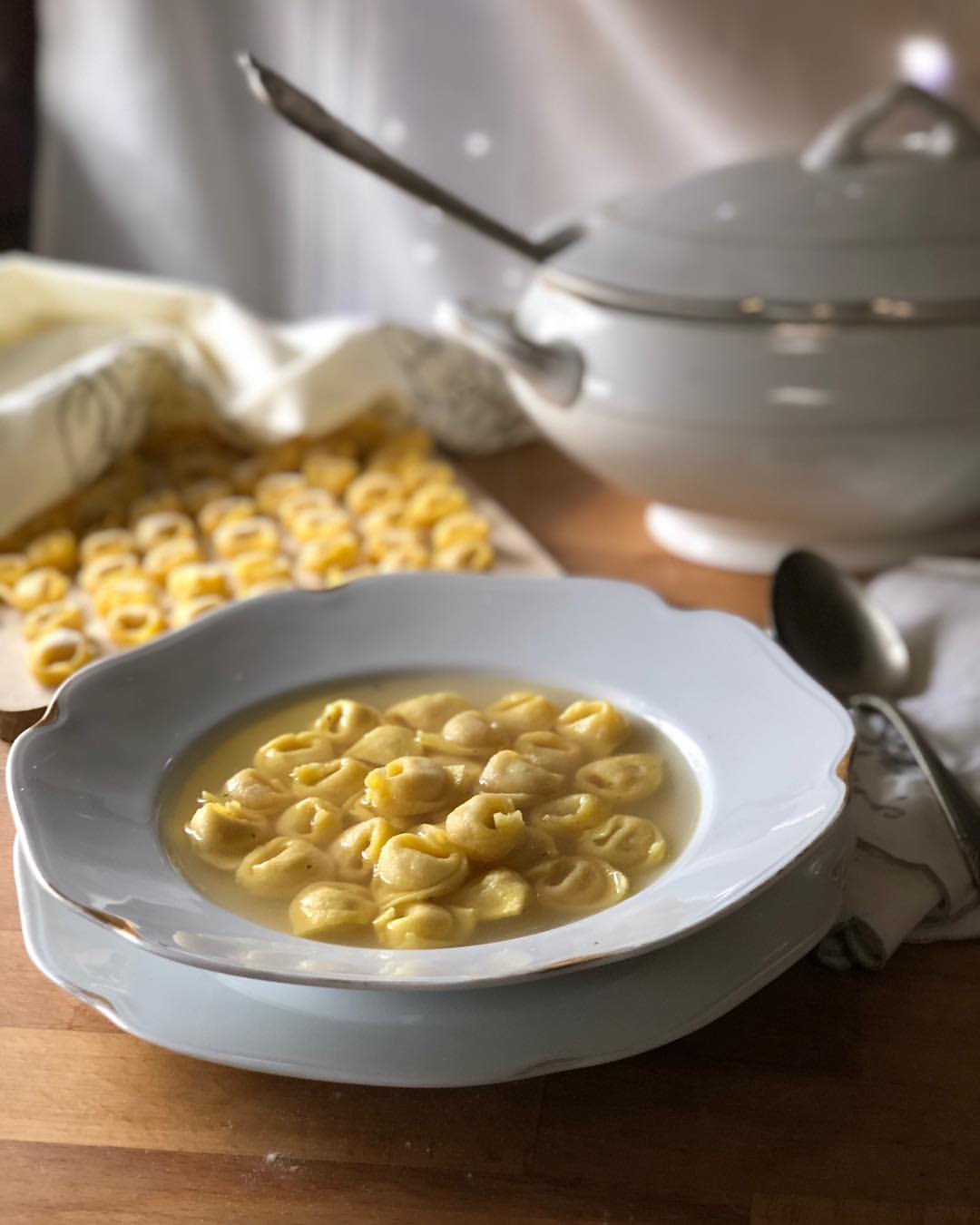
* We would like to thank the Dotta Confraternita del Tortellino for the information, what in the text is in italics is taken from the website confraternitadeltortellino.it
Author

Elisa Mazzini
Social Media Manager for @inEmiliaRomagna and full-time mom.
You may also like
5 food experiences not to be missed in Emilia Romagna
by Elisa Mazzini /// September 6, 2016

Interested in our newsletter?
Every first of the month, an email (in Italian) with selected contents and upcoming events.
A Romagna’s remedy for the cold weather: passatelli in broth!
by Arturo Castellini /// November 15, 2019
